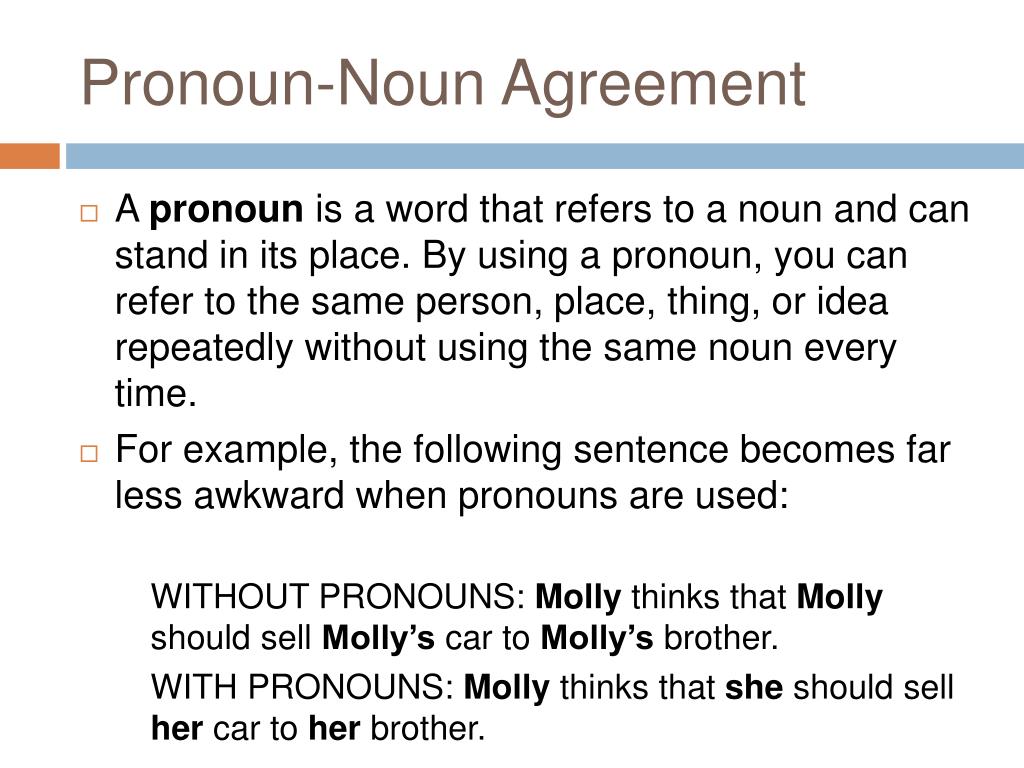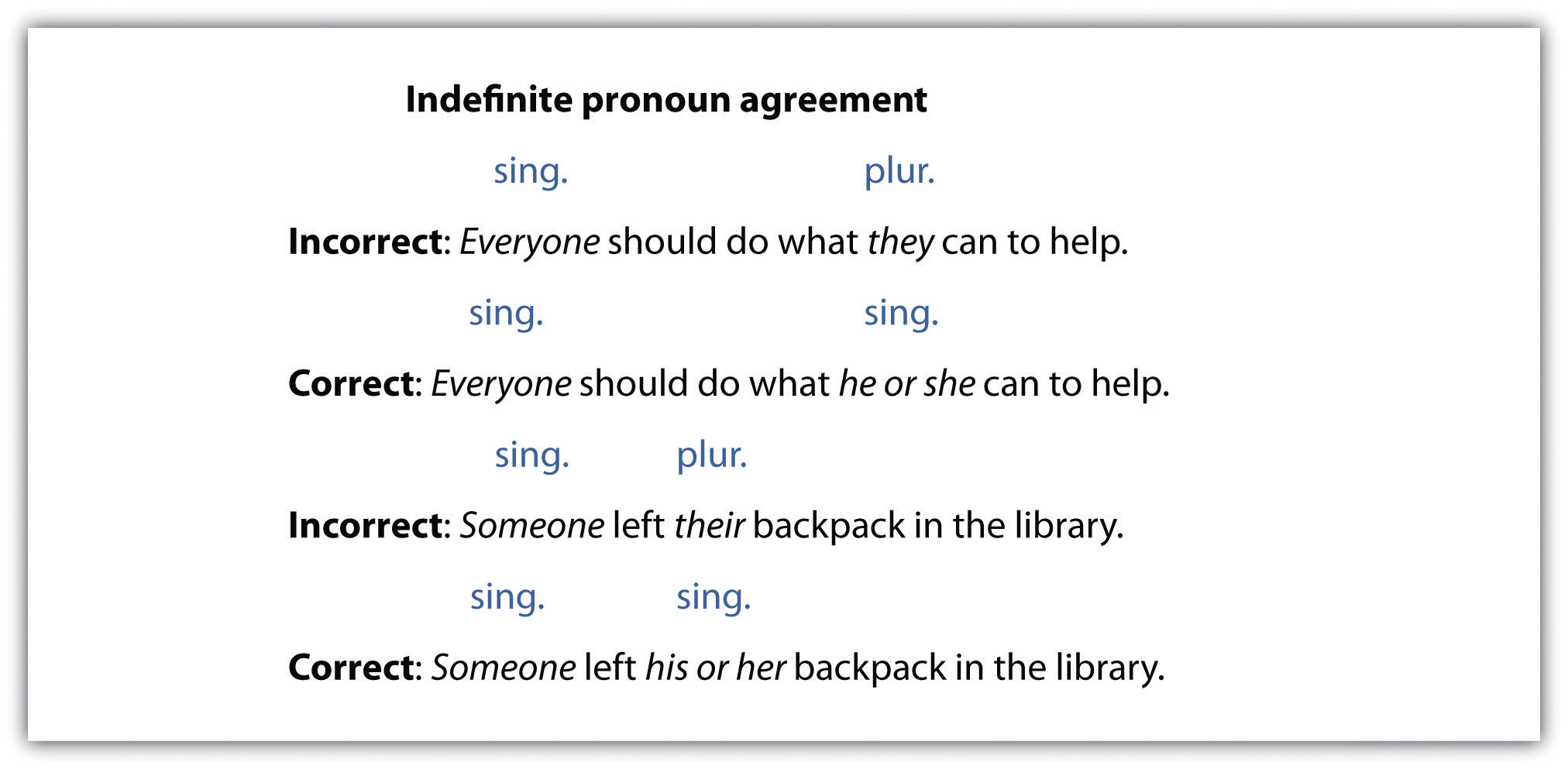

It is also important for people whose genders are neither male nor female. Knowing that they can be used to refer to individual people allows writers to avoid defaulting to he or she in regular use. In fact, singular use of they has been officially recognized as correct by several key bodies such as the Associated Press, American Psychological Association (APA) and Modern Language Association (MLA), the Oxford English Dictionary, and the Merriam-Webster Dictionary. While the English language does not have a unique gender-neutral third-person singular pronoun, they has been used to identify singular persons in speech, popular literature, and dictionary reference materials since at least the 12th century. Pronouns often indicate the gender of a person traditionally, he refers to males while she refers to females. Common pronouns include they/them/theirs, she/her/hers, and he/him/his.


A pronoun can refer to either a person performing an action or a person who is having an action done to them. Linguistically, personal pronouns are words that refer to people by replacing proper nouns, like names. What is a pronoun? Why do people use different ones? Why are he and she not enough? This section has information about how to use pronouns correctly. Writing Letters of Recommendation for Students.


 0 kommentar(er)
0 kommentar(er)
